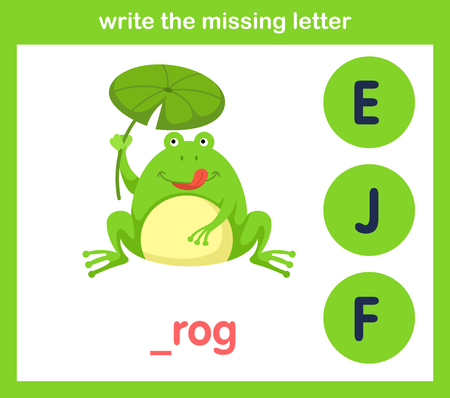Introduction to Palm Reading in English Society
Palm reading, or chiromancy, has woven itself through the tapestry of English society for centuries, shimmering on the fringes of folklore and quietly influencing popular imagination. From the bustling marketplaces of Victorian London to quaint village fairs, stories have circulated about gifted readers able to discern destiny from the lines etched upon one’s hand. However, the roots of palmistry in England stretch far deeper than modern parlour games or fairground curiosities; they reach into ancient traditions brought by Romani travellers and shaped by encounters with Eastern mysticism. This historical presence has given palm reading a unique place in English culture—one that is often misunderstood or misrepresented. As we journey through these layers of history and myth, we uncover not only the allure but also the confusion that surrounds palmistry in England today. By exploring its context within English society, we can better understand why so many misconceptions persist and set the stage for unraveling them one by one.
2. The Gypsy Stereotype and its Origins
When many in England think of palm reading, images shaped by popular media often spring to mind: colourful caravans, mysterious women draped in scarves, and the whispered promise of revealing your fate. This romanticised image has been heavily influenced by films, novels, and even the fairground attractions dotted across the British countryside. Yet, such portrayals reinforce a deep-rooted stereotype linking palmistry solely to Romani people—commonly referred to as “Gypsies” in older texts—a label that not only misrepresents their culture but also oversimplifies a complex tradition.
The reality is far more nuanced. Palm reading, or chiromancy, predates its association with the Romani community and has roots in ancient India, China, and Greece. The practice journeyed through centuries and civilisations before finding a foothold in England during the Middle Ages. However, as travelling fortune-tellers became part of English folklore and fairs, their presence was quickly tied to the Romani people due to visible lifestyles and outsider status. Media depictions soon cemented this connection in the public imagination.
Let’s look at how these stereotypes took shape compared to historical realities:
Popular Media Depiction |
Historical Reality |
|---|---|
Mystical Romani women as exclusive palm readers |
Palmistry practised across different English social classes and spiritual groups |
Caravans and crystal balls at country fairs |
Palmistry found in salons, parlours, and private homes since Victorian times |
Focus on fortune-telling for entertainment |
Used for self-reflection, spiritual insight, and character analysis |
This persistent stereotype can overshadow the genuine depth and diversity within palm reading traditions throughout English history. By understanding these origins—and questioning one-dimensional portrayals—we open ourselves to a richer appreciation of palmistry beyond media clichés and cultural misconceptions.

3. Science or Superstition?
One of the most persistent misconceptions about palm reading in English culture revolves around its classification: is it an ancient science rooted in wisdom, or merely a relic of old superstitions? This question lingers in the collective consciousness, often influencing how palmistry is perceived and discussed. While some assert that palm reading, also known as chiromancy, has scientific merit due to its historical connection with early medicine and character analysis, others dismiss it outright as fortune-telling folklore. The truth, however, lies somewhere between these extremes. In Englands rich tapestry of tradition, palmistry was never fully aligned with either the strict rigours of science nor relegated solely to the realm of irrational superstition. Instead, it functioned as a bridge—an intuitive art form that provided guidance, reflection, and conversation. In modern times, the perception of palm reading continues to evolve. Many people today view it less as a predictive science and more as a tool for self-exploration, personal storytelling, and cultural heritage. Understanding this nuanced place within English tradition helps dispel the myth that palmistry must be either wholly scientific or entirely superstitious. It invites us to appreciate the practice as both a historical curiosity and a living, breathing part of spiritual life in contemporary England.
4. Predicting the Future vs. Self-Reflection
One of the most enduring misconceptions about palm reading in English culture is that it is solely a mystical tool for forecasting ones destiny or unearthing dramatic events yet to unfold. While Victorian parlours and seaside fairs may have perpetuated the image of a fortune-teller peering into your hand and revealing who you’ll marry or how you’ll meet your end, the heart of palmistry—especially in modern English practice—beats with a much gentler and more insightful rhythm.
Rather than being chained to the idea of fate, contemporary English approaches to palm reading emphasise self-awareness, personal growth, and intuitive understanding. Many practitioners see the lines and shapes on your palm not as an unalterable script, but as a living map reflecting your tendencies, strengths, challenges, and potential for transformation. In this way, palm reading becomes less about prediction and more about reflection—a dialogue with oneself guided by ancient symbols and intuition.
The True Purpose: Reflection Over Prophecy
| Misconception | Reality in English Culture |
|---|---|
| Palmistry tells your future with certainty | Palmistry offers insights into your character and life patterns |
| It determines fixed fate | It encourages self-reflection and personal agency |
| Only fortune-tellers practise it | Many use it as a tool for mindfulness and growth |
This focus on self-reflection aligns beautifully with the British tradition of introspection—think of quiet moments in the countryside or reflective walks along the coast. Rather than handing over control to fate, English palmists invite you to become an active participant in your own journey. The art’s true magic lies in its ability to spark intuition: gently prompting questions like “What does this pattern reveal about how I react under stress?” or “How might I harness my creativity more fully?” In essence, palm reading in England is less about predicting storms ahead and more about learning to read the weather within.
5. Class and Gender Bias in Palm Reading
When we peer into the world of palm reading within English culture, we encounter not only the lines etched on our hands, but also the invisible lines drawn by class and gender assumptions. There is a persistent notion that palmistry is the preserve of certain social classes—often romanticised as a pastime of the lower or working class, or alternatively, dismissed as an eccentric hobby for bohemian circles. Such ideas are steeped in historical class divisions that have long shaped English society.
Consider how the Victorian fascination with spiritualism was both embraced by aristocratic parlours and scorned by rationalist elites. Even today, some imagine palm readers as mystical figures at seaside fairs or bustling markets—a narrative that subtly enforces the idea that palmistry is not serious or respectable enough for mainstream society. Yet, if we look closely, interest in palm reading crosses all strata; from university students exploring self-understanding to professionals seeking guidance, it quietly transcends those rigid class expectations.
Gender roles add another layer to these misconceptions. Traditionally, women have been associated more with intuitive arts like palmistry, while men were expected to be sceptical or disengaged. This gendered lens persists: women are often seen as both practitioners and primary clients of palm reading, reflecting broader themes in English culture around who is allowed to explore the mystical or emotional realms. Meanwhile, men who seek out such guidance may feel compelled to do so discreetly, lest they challenge cultural stereotypes about masculinity and rationality.
These biases can obscure the true diversity of those who turn to palm reading in England. The truth is far richer and more nuanced than old assumptions allow. When we set aside inherited beliefs about class and gender, we find that curiosity about ones destiny and inner self is universal—cutting across boundaries that English society has long held dear.
6. The Language of the Palm: Universal or Unique?
Many newcomers to palm reading hold the assumption that the lines, mounts, and signs on our hands speak a universal language—a sort of mystical Esperanto that transcends borders and cultures. However, within English culture, the art of palmistry is interwoven with local beliefs, idioms, and historical nuances, making its interpretation delightfully unique. While it’s true that certain symbols—like the heart line or fate line—appear in almost every tradition, English practitioners often reinterpret these marks through a distinctly British lens. For example, where some cultures see the “ring of Solomon” as a sign of wisdom bestowed by ancient kings, an English palmist might gently weave in archetypes from British folklore or reference literary icons such as Merlin or Shakespearean seers. Even everyday expressions seep into readings; a “stiff upper lip” might inspire a particular take on resilience seen in the lines near the thumb. This blending creates a tapestry where universal symbols are shaded with uniquely English meaning. So, while your palm may tell a story recognisable across continents, in England it may also whisper tales steeped in local colour, turning each reading into both a personal and cultural journey.
7. Ethical Concerns and Common Criticisms
Palm reading, or chiromancy, has long been viewed with a measure of scepticism within English culture. This wariness often stems from deep-seated ethical concerns and the widespread belief that palmistry treads a fine line between entertainment and exploitation. While some see it as a harmless curiosity or a quirky tradition woven into British folklore, others voice genuine worries about its moral implications.
One of the most common criticisms centres around the potential for manipulation. Critics argue that vulnerable individuals, especially those experiencing personal crises, may turn to palm readers for guidance, inadvertently placing their trust—and sometimes money—in the hands of those who may not always act with integrity. Stories abound in English society of charlatans capitalising on hope, weaving tales that play more to wishful thinking than spiritual truth.
Yet, reputable English palmists are keenly aware of these pitfalls and often strive to set themselves apart through transparency and ethical practice. Many uphold a code that emphasises honesty, confidentiality, and respect for client autonomy. They make it clear that palmistry should never replace professional advice—be it medical, financial, or legal—and stress the importance of empowering clients rather than fostering dependence.
Cultural scepticism in England also arises from a rationalist perspective rooted in the country’s Enlightenment heritage. Scientific thinkers frequently challenge palm reading’s validity, viewing it as superstition rather than legitimate insight. This atmosphere of doubt can lead to public debates about whether palmistry has a place in modern society or if it should be relegated to the realm of entertainment alongside fortune-telling at seaside fairs and village fêtes.
Despite these criticisms, there is an ongoing conversation among practitioners about how best to honour both the mystical tradition and contemporary ethical standards. Some English palm readers actively participate in community education, demystifying their craft and clarifying its limits while advocating for responsible conduct. In doing so, they seek to preserve palmistry’s cultural legacy without perpetuating harm or false hope.
Ultimately, navigating these ethical waters requires both intuition and discernment—a blend of old-world wisdom and modern moral awareness. As English culture continues to evolve, so too does the conversation around palm reading: a practice forever caught between shadowy misconception and the light of honest self-discovery.


